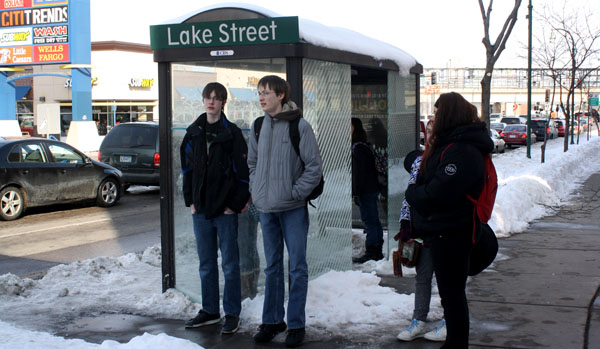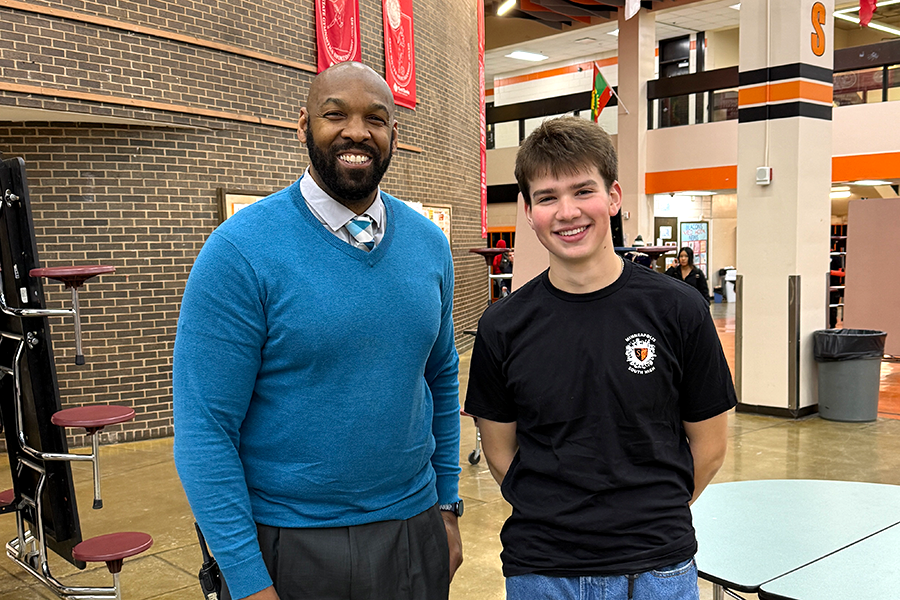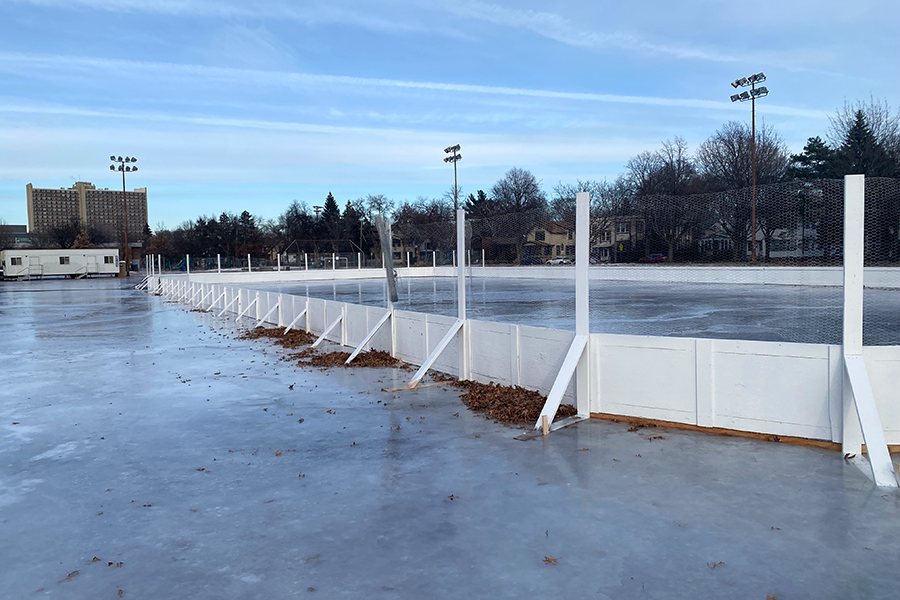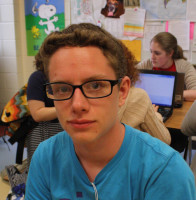Instead of receiving an orange bus sticker on your ID next year, South will be handing out free Metro Transit passes to all students who now qualify for school buses. These passes, unlike the old school bus, will be usable seven days a week from five in the morning until ten at night.
Minneapolis Public Schools (MPS) has made the switch to public transportation for multiple reasons including budget cuts, an attempt to increase attendance, and the availability of public buses to students who live outside of the attendance zone. Because of this switch, I have decided to take three separate forms of transportation to school to see if switching to public transportation will benefit the students as much as it benefits MPS.
Stepping onto the school bus, I look around at the small and graffiti-covered seats as students fold up their legs to let me pass. It’s the first day of my transportation odyssey, and after a short sprint to the bus stop I step onto the bus, barely making it. The bus lurches into motion before I sit down, forcing me to fall back into the seat next to me.
It’s a bumpy and slightly chilly ride, but looking around I notice other kids laughing and talking and realize even with it’s small discomforts the school bus is more of a place for friends to catch up with each other than a ride to school.
Within fifteen minutes of getting on the bus it pulls up to South and stepping off I notice being dropped off directly in front of the school is another plus. When taking the light rail or public buses, just walking from the station to school can be several blocks and in the middle of winter with temperatures below freezing that extra distance can make a huge difference.
That said, riding the school bus does have its drawbacks and frankly, as a junior, the excitement of riding the bright yellow bus to school everyday has worn off. Ducking my head as I walked up the bus’s steps I thought of how the public buses and light rail not only give students a
chance to catch a later ride if they’re running late, an opportunity to experience the world outside of school, and see how other adults commute to work.
I then set out to travel to school by bicycle. Earlier that morning, I had missed the bus, again, and grabbing my pack and bike I sped off, or more accurately, slowly pedaled through the foot-high snow.
The trek through snow and ice is not an easy one. With no hat, hood or gloves I leaned forward and started the usually 7-minute ride along Hiawatha. I knew it was slightly chilly out when my left ear grew twice its size and became bright red for three days.
By the time I lost complete feeling in my ear I was only a block away from school, so I bent my head down to protect my face from the wind and pedaled up the final hill and slid into the parking lot (literally). With shaking hands I locked my bike. The five-mile ride to school is not always this harsh, but with windy weather and cold temperatures, it’s days like these I can see the sense in taking public transportation to school, or wearing a hat.
The light rail suddenly came whooshing past, blowing snow and icy air into my face, its warm occupants staring out at me with happy smiles. For a few seconds I hated them but quickly forgot as my bike hit a patch of ice. Slowly pedaling forward, I turned my handlebars and pushed my way onto clear cement.
When I finally made it home that day, I found out I had a bad case of frostbite on my left ear.
When you miss the bus and have no other way of getting to school, biking, at least for me, can be the last and only option. And when the school bus comes at an exact time and stops for fewer than thirty seconds it can be pretty easy to miss. With the new transit passes, however, students running late only have to wait five to fifteen minutes for the next bus or train.
So with a giant left ear, red and swollen, I took the light rail the next day. The short walk to the train station was chilly, but being properly dressed, hat and all, it was nothing compared to the previous day. I waited about three minutes for the train, huddled under one of the heat lights, and, getting on, realized I was the only person under the age of twenty boarding.
Having not taken the train that often, I had assumed the Hiawatha light rail would be full of other high schoolers going to either Roosevelt or South, but looking around at the adults dressed in suits and ties, I realized I was wrong. The ride to South was much shorter and warmer than the bike ride or even the school bus, but without other kids my age or even the usual loudness of the bus, the train felt awkwardly quiet.
The two-block distance from the train station to South was short and quick. Taking the train home was just as uneventful, with the only difference being the addition of a few South and Roosevelt students getting on. Walking home I realized getting to school through public transportation was not only fast and warm, but more convenient for students either needing to get to school early or leave late because of afterschool activities. With a train coming on a regular schedule you never have to wait long, and running late only means catching the next train.
In the end, the light rail took the least amount of time, taking approximately ten minutes for the four-mile distance to school but looking back, to me, the school bus seemed to be the fastest, even with the frequent stops and red lights.
So the switch to public transportation, while exposing students to the world outside of school, gives up the old familiar school bus most students have grown up riding, and for good or bad pushes students another step forward in their transition from children to adults.








